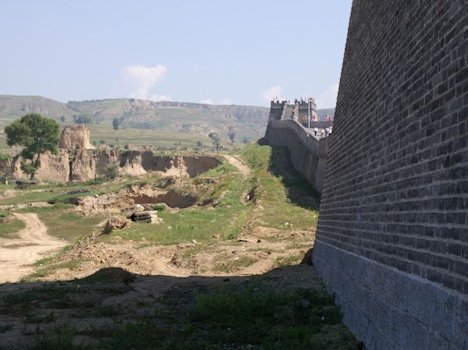
|
Chinese Banner Level
A banner is an administrative division of the Inner
Mongolia Autonomous Region in the People's Republic of China.
Banners were first used during the Qing Dynasty, which organized the Mongols
into banners except those who belonged to the Manchu Eight Banners. Each banner
had sumu as nominal subdivisions. In Inner Mongolia, several banners made up a
league. In the rest, including Outer Mongolia, northern Xinjiang and Qinghai,
Aimag was the largest administrative division. While it restricted the
Mongols from crossing banner borders, the dynasty protected Mongolia from
population pressure from China proper.
Today, banners are a county level division in the Chinese administrative
hierarchy. There are 49 banners in total.
|
| Part of the Great Wall of China (Inner Mongolia) |